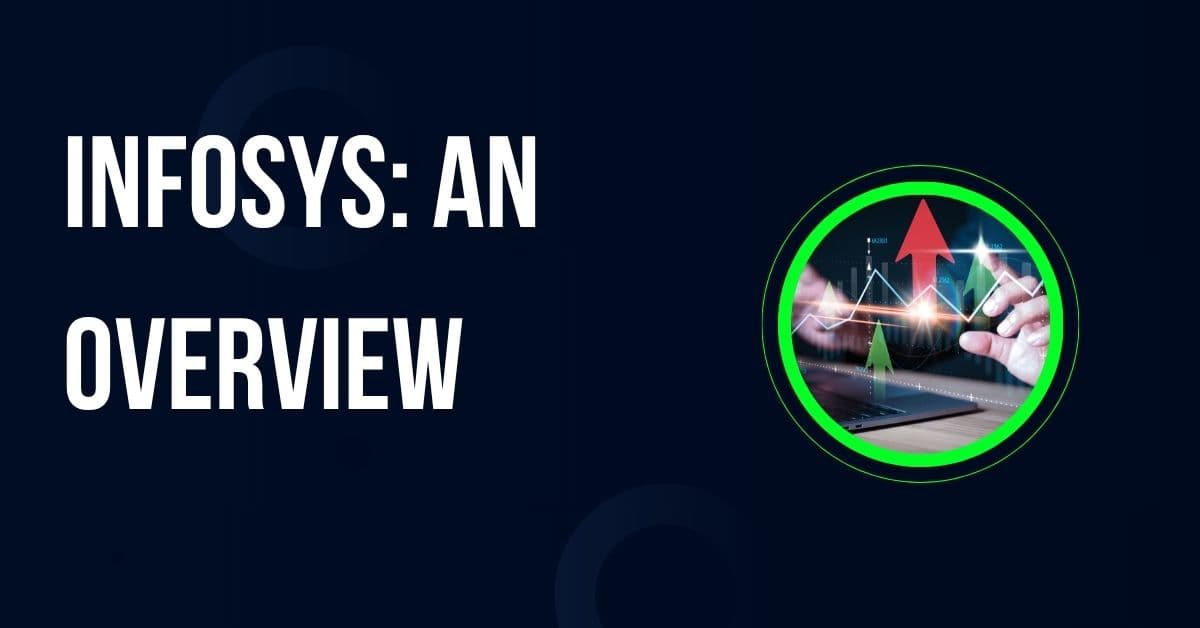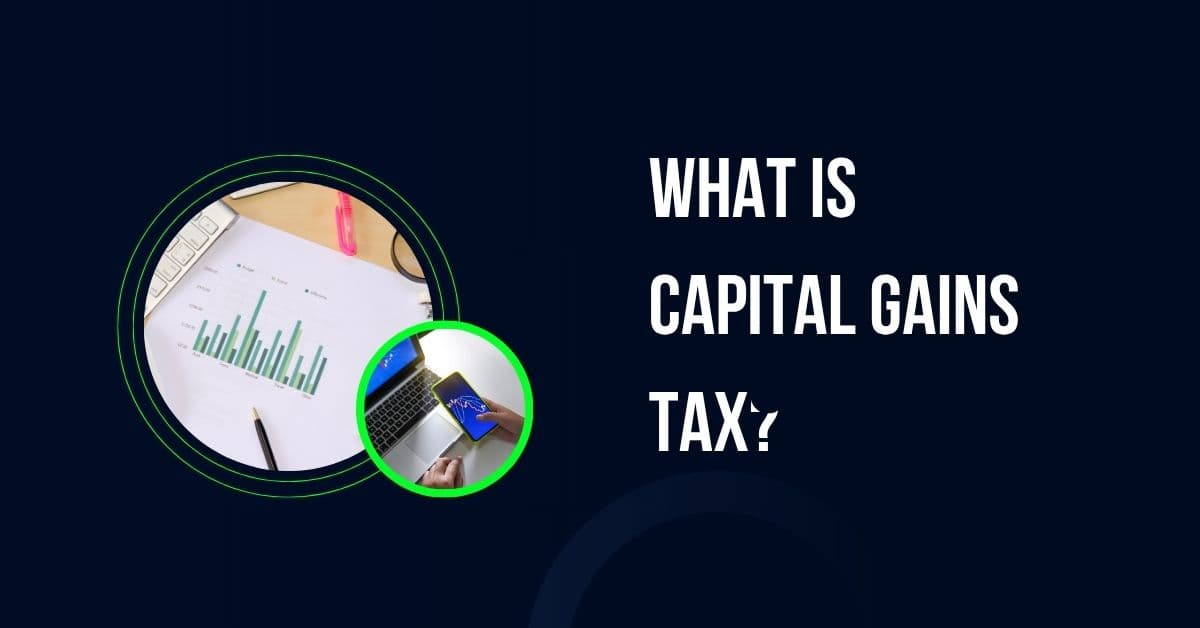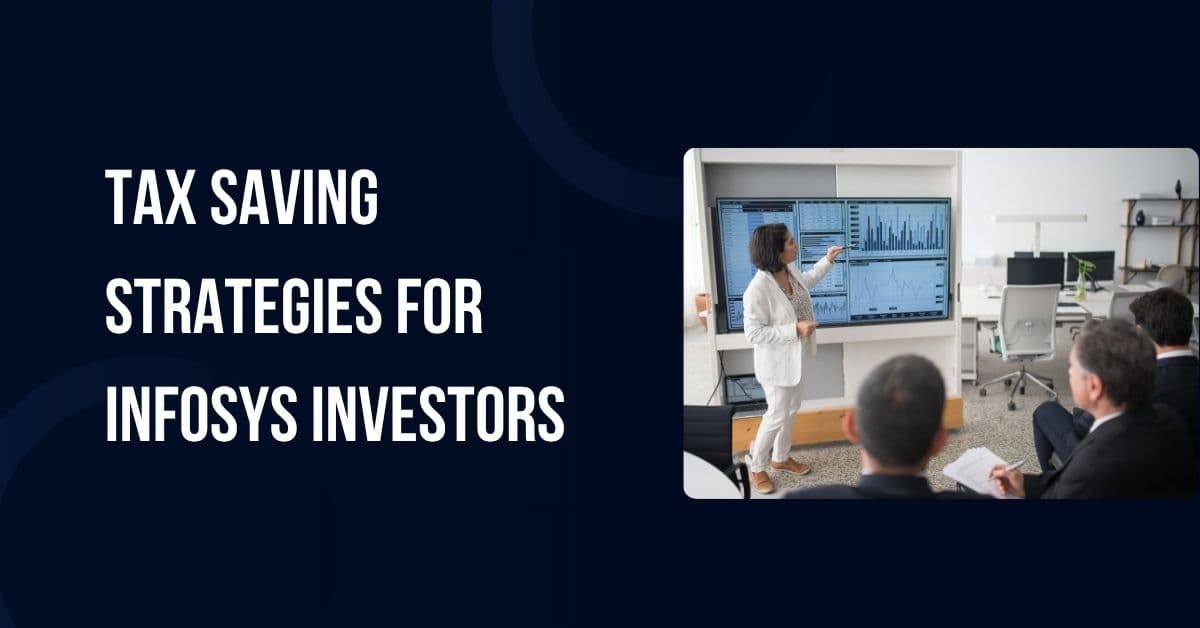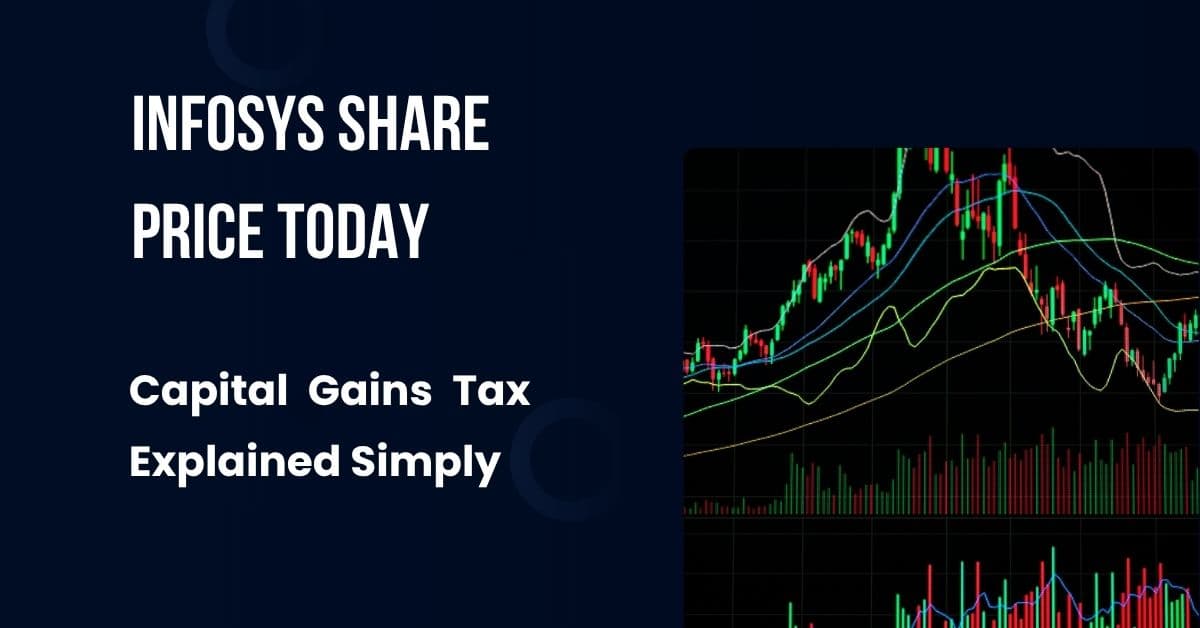Infosys Share Price Today: A mainstay of the Indian stock market, Infosys Limited is the country’s second-largest IT services provider and is renowned for its pioneering work in cloud computing, artificial intelligence, and digital transformation. On the National Stock Exchange (NSE), Infosys’s share price finished at around ₹1,558.90 on July 23, 2025, a 0.76% decrease from the day before [Moneycontrol]. Infosys is a well-liked option for new investors in India due to its strong growth trajectory and market capitalisation of around ₹6,52,595 crore. Selling shares for a profit, however, results in capital gains tax, which, if not handled carefully, can lower your earnings. This article offers a straightforward, approachable explanation of capital gains tax on Infosys stock, including tax rates, computations, and methods to reduce your tax obligation and optimise your investment results.
Infosys: An Overview
Infosys, a global leader in IT consulting, was founded in 1981 and has its headquarters in Bengaluru. It serves clients in more than 56 countries in industries like manufacturing, healthcare, and finance. Cloud migration, cybersecurity solutions, and AI-based analytics are among its digital services, which account for about 57% of its revenue [Screener]. Infosys stated in Q1 FY26 (April–June 2025):

- Revenue: Increased 3.7% year over year (YoY) to ₹40,135 crore.
- Net profit: Increased by 7.1% year on year to ₹6,368 crore, owing to significant transaction wins ($4.1 billion TCV).
- EBITDA margin: Operating efficiency is shown in the EBITDA margin of 21.2% [Financial Express].
- Dividend yield: With a recent dividend of ₹28 per share [Tickertape], the dividend yield is 2.74%.
Beginners find Infosys appealing because it offers stability and development potential, with a 52-week range of ₹1,307–₹2,007 and a P/E ratio of 24.8 (below the sector average of 33.13) [Screener]. Its recent annual fall of 12.74%, however, emphasises market instability and calls for tax planning in order to maximise earnings.
| Metric | Value |
| Share Price (23 July,2025) | ₹1,558.90 |
| 52-Week Range | ₹1,307-₹2,007 |
| Market Cap | ₹6,52,595 crore |
| P/E Ratio | 24.8 (Sector: 33.13) |
| Dividend Yield | 2.74% |
| EPS | ₹62.83 |
Forecast for Share Prices in 2025
Infosys’s development potential and market obstacles are reflected in the varying analyst estimates for the company’s share price by December 2025:
- High Estimate: ₹2,075 (optimistic because to cloud and AI growth, according to Investing.com).
- Low Estimate: ₹1,350 (conservative, accounting for the slowdown in global IT spending).
- Average Target: ₹1,712.50, indicating a ~9.8% increase from ₹1,558.90.
- Analyst Sentiment: Out of 35 analysts, 19 advise “buying,” seven advise “holding,” and nine advise “selling.” Their optimism is fuelled by significant Q1 FY26 deal wins and margin improvements [TradingView].
Share price movements will be influenced by the upcoming earnings report, which is anticipated to be released in October 2025 and will offer more insight into growth and profitability [Economic Times]. To keep more of these possible profits, beginners must comprehend capital gains tax.
What is Capital Gains Tax?
The tax imposed on profits from the sale of a capital asset, such equity shares of Infosys, is known as the capital gains tax. The difference between the buy and sale prices (plus any transaction expenses like broking fees) is the profit, often known as the capital gain. The holding time determines how capital gains on equity shares are categorised in India:

- Short-Term Capital Gains (STCG): Gains from shares held for less than a year are referred to as short-term capital gains, or STCG.
- Long-Term Capital Gains (LTCG): Gains from shares held for longer than a year are known as long-term capital gains, or LTCG.
The amount you keep from the earnings of your Infosys investment is affected by the substantial differences in tax treatment.
India’s Capital Gains Tax Rates (FY 2025-26)
In accordance with the July 23, 2024, announcement of the Union Budget 2024, the tax rates for equity shares listed on reputable stock exchanges such as the NSE are:
- STCG: Regardless of your income bracket, 20% tax is applied to the total gain. Shares sold within a year of purchase are covered by this [Bajaj Finserv].
- LTCG: Gains are tax-exempt up to ₹1.25 lakh per fiscal year. Without indexation, gains exceeding ₹1.25 lakh are subject to 12.5% taxation [Tax2win]. Equity shares are not eligible for indexation, which modifies the purchase price to account for inflation.
A 4% Health and Education Cess is also added to the tax amount, and high-income earners (those making more than ₹50 lakh a year) may be subject to a 10–25% surcharge. This guide concentrates on base rates for simplicity’s sake.
| Type | Holding Period | Tax Rate |
| STCG | < 12 months | 20% on entire gain |
| LTCG | > 12 months | 0% up to ₹1.25 lakh,12.5% above |
How to calculate capital gains?
It’s easy to calculate capital gains:
- Capital gain is calculated as follows: selling price less purchase price minus transaction costs (such as broking fees).
- Assume low transaction costs (e.g., 0.1% broking) for simplicity’s sake.
Example 1: Short-Term Capital Gains
Assume that on January 1, 2025, you purchase 100 Infosys shares for ₹1,400 each, and on June 30, 2025, you sell them for ₹1,600 each:
- Cost of Purchase: 100 × 1,400 = 1,40,000
- Price of Sale: 100 × ₹1,600 = ₹1,60,000
- ₹1,60,000 − ₹1,40,000 = ₹20,000 is the capital gain.
- Six-month holding period (STCG)
- Tax: ₹4,000 (20% of ₹20,000)
You keep ₹16,000 of the profit after paying ₹4,000 in taxes.
Example 2: Long-Term Capital Gains
Assume that on January 1, 2024, you purchase 100 Infosys shares for ₹1,200 each, and on July 23, 2025, you sell them for ₹1,558.90 each:
- The purchase price is ₹1,20,000 (100 × 1,200).
- Selling Price: ₹1,55,890 (100 × ₹1,558.90)
- The capital gain is ₹35,890 (₹1,55,890 – ₹1,20,000).
- 18-month holding period (LTCG)
- Tax: The gain is tax-free because ₹35,890 is less than ₹1.25 lakh.
The tax would be as follows if the gain was ₹1,50,000:
Gain subject to taxes: ₹1,50,000 − ₹1.25 lakh = ₹25,000
Tax: ₹3,125 (12.5% of ₹25,000).
Tax Saving Strategies for Infosys Investors
When investing in Infosys shares, take into account these simple strategies to reduce your tax liability:

1. Hold shares for more than 12 months
Gains from holding Infosys shares for more than a year are eligible for LTCG, which offers a lower 12.5% tax rate on excess gains as well as a ₹1.25 lakh tax-free cap. When compared to the 20% STCG rate, this can result in significant tax savings.
For example, if a ₹50,000 gain is sold after six months, ₹10,000 in tax (20%) is due. It is tax-free (within ₹1.25 lakh) if held for 13 months, saving ₹10,000.
2. Tax Loss Harvesting
To offset Infosys gains and lower taxable income, sell investments that are losing money. While long-term capital losses (LTCL) only offset LTCG, short-term capital losses (STCL) can offset both STCG and LTCG. For eight years, losses can be carried forward.
For example, The taxable gains are reduced to ₹30,000 when a ₹50,000 Infosys gain is offset by a ₹20,000 loss from another stock. This results in savings of ₹6,000 (STCG at 20%) or ₹3,750 (LTCG at 12.5%).
3. Develop a Strategic Sales Plan
Plan the selling of your shares to avoid going over the ₹1.25 lakh LTCG exemption limit. To keep overall profits below this limit, sell Infosys shares if you have additional LTCG.
Example: if you have ₹1,00,000 in other LTCG and sell Infosys shares for ₹25,000, you will save ₹3,125 in taxes and preserve the total LTCG at ₹1,25,000 (tax-free).
4. Accurately Track the Cost Basis
Maintain precise records of the prices at which you buy and sell, particularly if Infosys offers splits or bonuses that affect the cost per share. To automatically track transactions, use a Demat account with platforms such as [Groww]or [Zerodha].
Example: Buying 100 shares at ₹1,000 (₹1,00,000) and obtaining a 1:1 bonus multiplies your shares to 200, reducing the cost per share to ₹500. A LTCG of ₹2,11,780 is obtained by selling for ₹1,558.90, with ₹86,780 subject to 12.5% tax (₹10,847.50).
5. Speak with a Tax Professional
To maximise your tax strategy and guarantee compliance, get advice from a SEBI-registered financial advisor or tax expert through platforms such as [Bajaj Finserv] for complex portfolios or significant gains.
Tips for Investing and Budgeting
To manage finances when investing in Infosys:
- Start Small: To reduce risk, invest ₹5,000 to ₹10,000 (3–6 shares at ₹1,558.90), spreading purchases via dollar-cost averaging [Groww].
- The 50/30/20 Rule: States that 20% of income should go towards savings or investments, 30% towards wants, and 50% towards requirements. Invest ₹10,000 of a ₹50,000 income, with ₹1,000 to ₹2,000 going to Infosys [NerdWallet].
- Pay off high-interest debt: Prior to investing, pay off credit card debt (20–40% interest), as debt expenses outweigh stock returns (~10–12%). [Exchange for Finance].
- Create an Emergency Fund: To prevent selling shares during drops, save three to six months’ worth of expenses (₹1.5 to ₹3 lakh for ₹50,000 monthly costs) [Policybazaar].
- Track Expenses: To make sure investments fall inside your budget, use programs such as [Money View].
How to Make an Infosys Investment
- To create a Demat account, use digital KYC to register with [Zerodha], [Groww], or [Upstox].
- Put Money Into Your Account: Use net banking or UPI to transfer money.
- Use the NSE/BSE ticker “INFY” to search for INFY.
- Make a Purchase: Select a market order or a limit order (for example, ₹1,550).
- Keep an eye on performance by following news and prices on [NSE India] or [Moneycontrol].
Frequently Asked Questions (FAQs)
1. What is the current share price of Infosys?
On the NSE, Infosys closed at ₹1,558.90 on July 23, 2025 [Moneycontrol].
2. What is the Infosys share capital gains tax?
Whereas LTCG (kept over 12 months) is tax-free up to ₹1.25 lakh, after which it is subject to 12.5% tax [Tax2win], STCG (held under 12 months) is subject to 20% tax.
3. What are some ways to lower capital gains tax?
Use tax loss harvesting, hold onto shares for more than a year, and schedule sales inside the ₹1.25 lakh exemption [ClearTax].
4. Is Infosys an ideal option for beginner investors?
It is attractive due to its dividends and stability, but diversification is advised by its high valuations and volatility [Screener].
5. How should my capital gains be reported on my ITR?
With assistance from [ClearTax], use transaction statements from your Demat account to report gains in ITR-2 or ITR-3.
An Example from Real Life
Scenario: On January 1, 2025, Priya, a 30-year-old Bengaluru professional who makes ₹50,000 per month, purchases 100 Infosys shares at ₹1,400 (₹1,40,000).
- She sells 50 shares at ₹1,600 on June 30, 2025 (STCG) and 50 shares at ₹1,800 on July 1, 2026 (LTCG) after opening a Demat account with [Groww]. Gain of ₹10,000 (50 × ₹200) for STCG, subject to 20% tax (₹2,000). For LTCG: tax-free gain of ₹20,000 (50 × ₹400) (within ₹1.25 lakh). She files her ITR via [ClearTax].
- Result: By keeping half of her shares for LTCG, Priya saves ₹2,500 and keeps ₹28,000 of her ₹30,000 total gain.
Conclusion
With a share price of ₹1,558.90 as of July 23, 2025, Infosys provides beginners with a reliable investment opportunity in India’s IT industry. To optimise returns, it is crucial to comprehend capital gains tax, which is 20% for STCG and 12.5% for LTCG over ₹1.25 lakh. You can lower your tax burden by keeping shares for more than a year, employing tax loss harvesting, and carefully managing transactions. To match your strategy with your objectives, start with a little investment through [Zerodha] or [Groww], diversify your holdings, and speak with a financial counsellor. Take charge of your investments now to safely increase your fortune in 2025!
Disclaimer: Investing in the stock market is risky, and tax regulations are subject to change. Performance in the past does not guarantee future outcomes. Before making an investment or paying taxes, speak with a knowledgeable financial or tax expert. This article is only meant to be instructive.
Reliance Industries Result: Tax Strategies to Consider After Q1 FY26 Earnings
Income Tax Refund Above 50 000 – Know the Rules Before You Spend!
Titan Share Price Target 2025 – Should You Invest Now or Wait?

